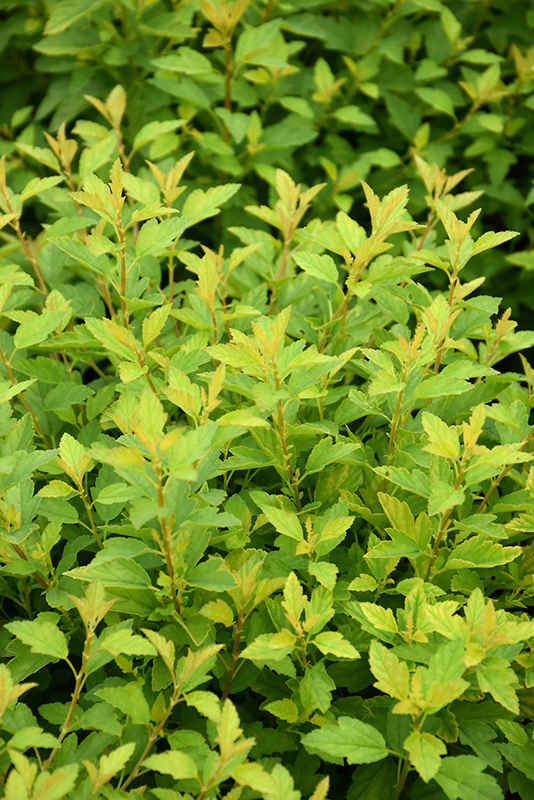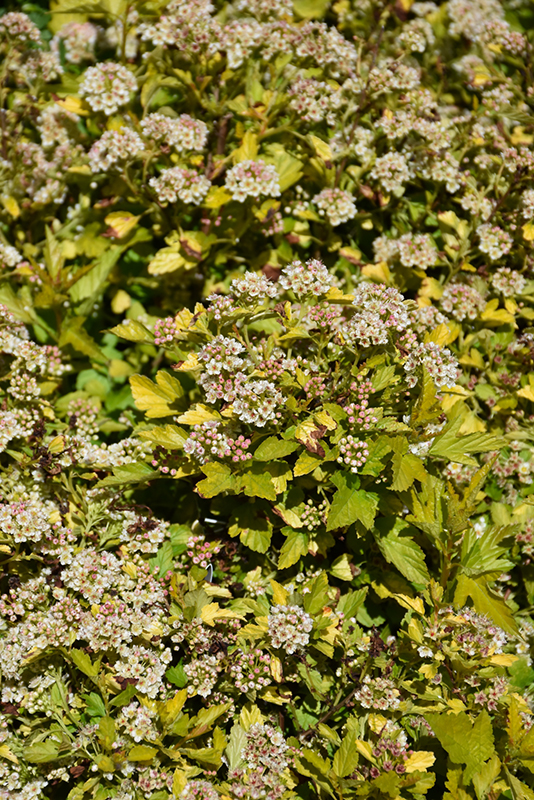Ninebark, Raspberry Lemonade Physocarpus opulifolius 'ZLEYel2' Height: 4 feet Spread: 4 feet
Sunlight:
Hardiness Zone: 2a Other Names: Eastern Ninebark Brand: Plants Nouveau Description: An exciting, dwarf cultivar featuring bright yellow tinted leaves all season long, on an arching, cascading habit; white flowers give way to beautiful coral berries; extremely tough and durable, best foliage color is achieved in full sun Ornamental Features Ninebark, Raspberry Lemonade features showy clusters of white star-shaped flowers at the ends of the branches from late spring to early summer, which emerge from distinctive shell pink flower buds. It has attractive chartreuse-variegated light green foliage with hints of gold which emerges yellow in spring. The serrated lobed leaves are highly ornamental and turn outstanding shades of gold and orange in the fall. It features abundant showy coral-pink capsules with red overtones from late summer to mid fall. The peeling tan bark adds an interesting dimension to the landscape. Landscape Attributes Ninebark, Raspberry Lemonade is a multi-stemmed deciduous shrub with a shapely form and gracefully arching branches. Its average texture blends into the landscape, but can be balanced by one or two finer or coarser trees or shrubs for an effective composition. This shrub will require occasional maintenance and upkeep, and can be pruned at anytime. It has no significant negative characteristics. Ninebark, Raspberry Lemonade is recommended for the following landscape applications; Planting & Growing Ninebark, Raspberry Lemonade will grow to be about 4 feet tall at maturity, with a spread of 4 feet. It has a low canopy. It grows at a medium rate, and under ideal conditions can be expected to live for approximately 30 years. This shrub does best in full sun to partial shade. It prefers to grow in average to moist conditions, and shouldn't be allowed to dry out. To help this plant achive its best flowering performance, periodically apply a flower-boosting fertilizer from early spring through into the active growing season. It is not particular as to soil type or pH. It is highly tolerant of urban pollution and will even thrive in inner city environments. This is a selection of a native North American species.![]()
![]()
![]()
![]()
![]()
![]()
![]()
![]()
![]()
![]()
![]()
![]()
![]()
![]()
![]()


